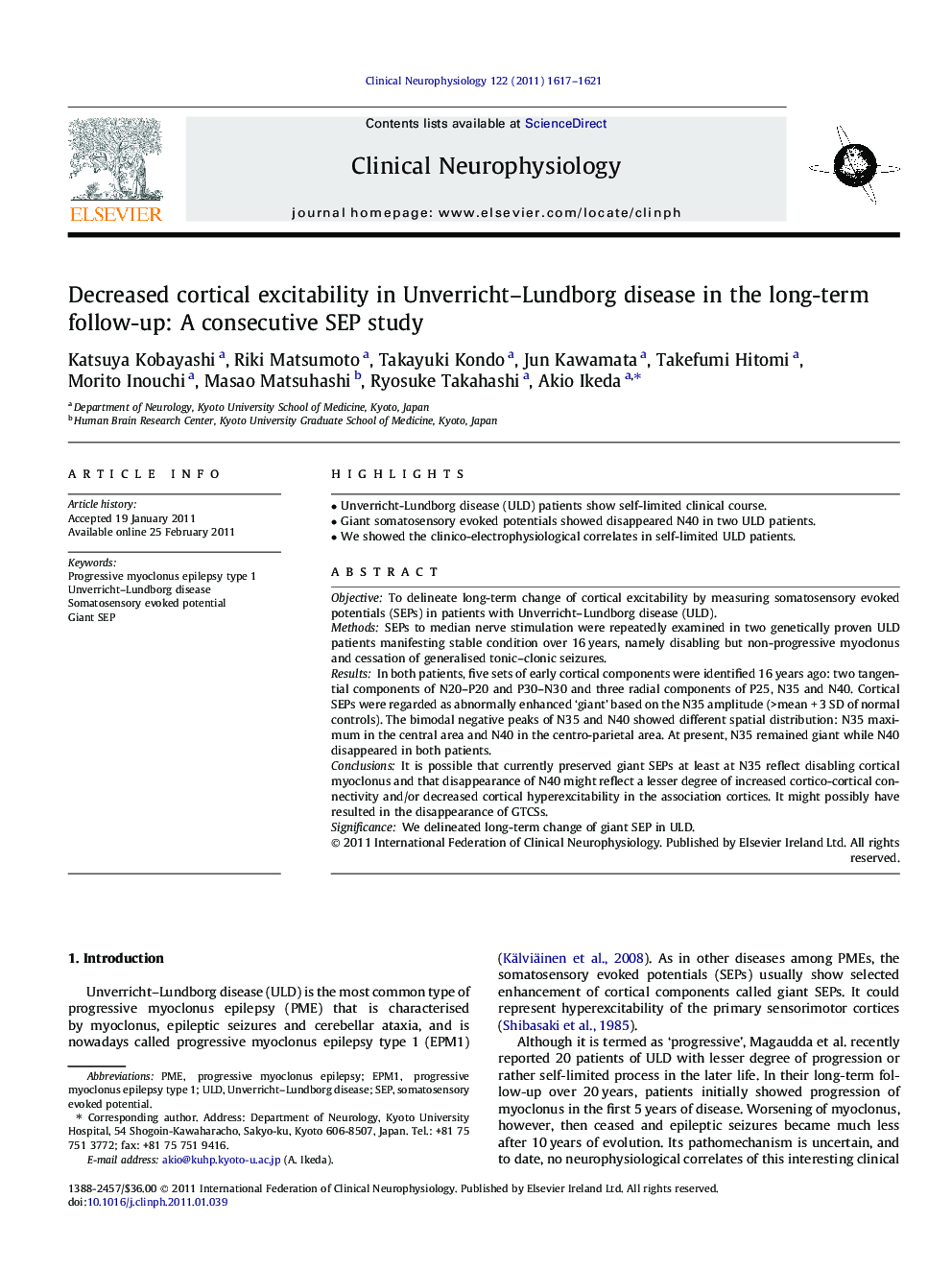| Article ID | Journal | Published Year | Pages | File Type |
|---|---|---|---|---|
| 3044027 | Clinical Neurophysiology | 2011 | 5 Pages |
ObjectiveTo delineate long-term change of cortical excitability by measuring somatosensory evoked potentials (SEPs) in patients with Unverricht–Lundborg disease (ULD).MethodsSEPs to median nerve stimulation were repeatedly examined in two genetically proven ULD patients manifesting stable condition over 16 years, namely disabling but non-progressive myoclonus and cessation of generalised tonic–clonic seizures.ResultsIn both patients, five sets of early cortical components were identified 16 years ago: two tangential components of N20–P20 and P30–N30 and three radial components of P25, N35 and N40. Cortical SEPs were regarded as abnormally enhanced ‘giant’ based on the N35 amplitude (>mean + 3 SD of normal controls). The bimodal negative peaks of N35 and N40 showed different spatial distribution: N35 maximum in the central area and N40 in the centro-parietal area. At present, N35 remained giant while N40 disappeared in both patients.ConclusionsIt is possible that currently preserved giant SEPs at least at N35 reflect disabling cortical myoclonus and that disappearance of N40 might reflect a lesser degree of increased cortico-cortical connectivity and/or decreased cortical hyperexcitability in the association cortices. It might possibly have resulted in the disappearance of GTCSs.SignificanceWe delineated long-term change of giant SEP in ULD.
► Unverricht-Lundborg disease (ULD) patients show self-limited clinical course. ► Giant somatosensory evoked potentials showed disappeared N40 in two ULD patients. ► We showed the clinico-electrophysiological correlates in self-limited ULD patients.
